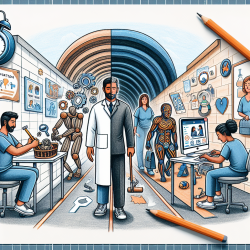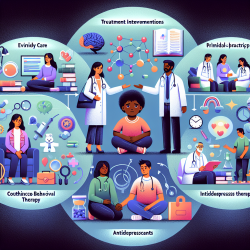Empowering Lives Through Movement: A Path to Healthier Futures
The COVID-19 pandemic has reshaped our world in many ways, highlighting the importance of health and well-being. As we continue to navigate these changes, the role of physical activity as a preventive strategy against COVID-19 has come to the forefront. A recent study published in the American Journal of Preventive Medicine emphasizes the potential of exercise in reducing COVID-19-related mortality and hospitalization. This revelation not only underscores the need for active lifestyles but also presents an opportunity for practitioners to enhance their skills and advocate for healthier communities.
The Power of Physical Activity
Physical inactivity is a significant public health issue, costing the healthcare system billions annually. The Centers for Disease Control and Prevention (CDC) reports that only about half of Americans meet the recommended physical activity guidelines. This lack of activity is more pronounced among older adults and women, often due to barriers such as time constraints, motivation, income, and safety concerns.
The study from the American Journal of Preventive Medicine highlights that regular exercise can boost the immune system, enhance mental well-being, and improve overall quality of life. As practitioners, understanding these benefits allows us to better support our clients and communities in adopting active lifestyles.
Implementing Effective Interventions
To combat physical inactivity, the Global Advocacy for Physical Activity Council has identified seven best investments for promoting physical activity:
- School programs that integrate physical activity into daily routines
- Transportation policies that encourage walking and cycling
- Urban design that supports active living
- Primary prevention strategies that include physical activity
- Public education campaigns on the benefits of exercise
- Community programs that promote active lifestyles
- Sports initiatives accessible to all
These investments require effective policies and programs that promote sustainable physical activity-centered lifestyles. As practitioners, we can advocate for these changes by collaborating with schools, communities, and policymakers to implement strategies that encourage regular exercise.
Leading by Example
The Committee on Sports Medicine of the American Academy of Pediatrics emphasizes the importance of teaching children the value of regular physical activity. Encouraging parents to serve as role models by participating in physical activities with their children can foster a culture of health and wellness from a young age.
Moreover, creating environments that support active lifestyles is crucial. For instance, establishing car-free zones around schools can provide safer spaces for children to walk and cycle, reducing barriers to physical activity.
Opportunities for Practitioners
As practitioners, we have the unique opportunity to lead by example and inspire others to embrace active lifestyles. By incorporating the findings of this study into our practice, we can enhance our skills and provide better support to those we serve. Encouraging further research and staying informed through conferences, publications, and webinars will empower us to make a lasting impact on public health.
To read the original research paper, please follow this link: Potential of Exercise as a COVID-19 Prevention Strategy.










